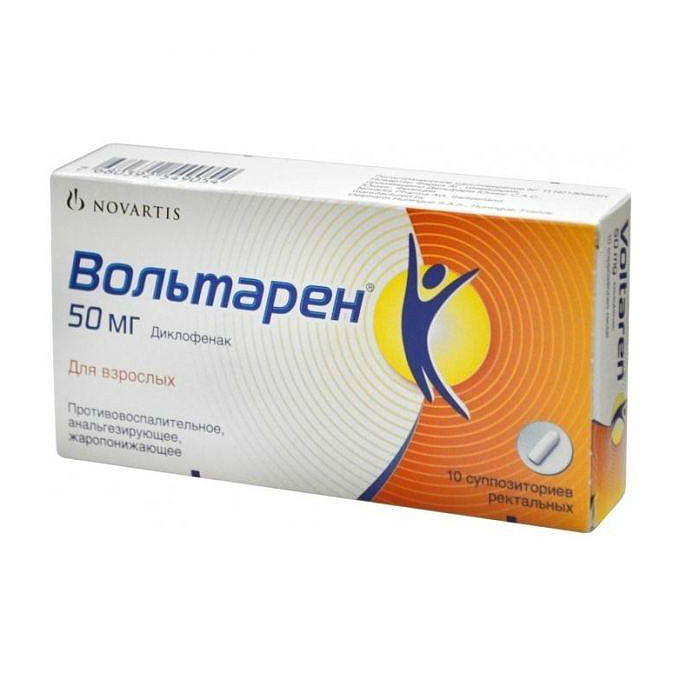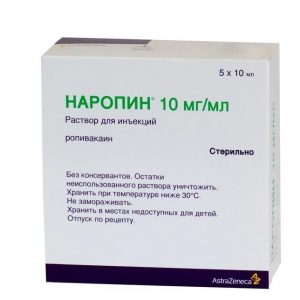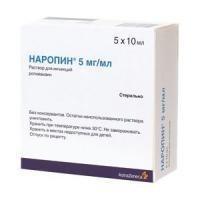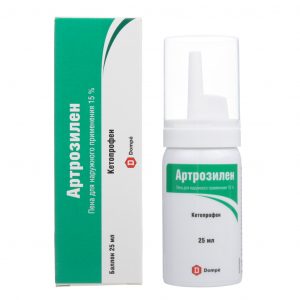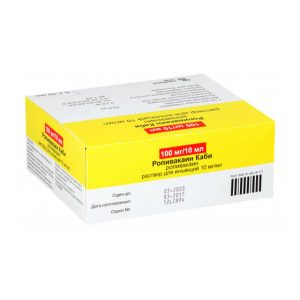Description
Product form
suppositories
Packing
10 pcs.
Pharmacological action
Voltaren is a non-steroidal anti-inflammatory drug (NSAID). It has a pronounced analgesic, anti-inflammatory and antipyretic effect.
Inhibition of prostaglandin biosynthesis is considered the main mechanism of action of diclofenac, established under experimental conditions. Prostaglandins play an important role in the genesis of inflammation, pain, and fever.
In vitro, diclofenac sodium in concentrations equivalent to those achieved in treating patients does not inhibit the biosynthesis of cartilaginous proteoglycans.
In rheumatic diseases, the anti-inflammatory and analgesic properties of Voltaren provide a clinical effect, characterized by a significant decrease in the severity of such manifestations of diseases as pain at rest and during movement, morning stiffness and swelling of the joints, as well as an improvement in the functional state.
Indications
– inflammatory and degenerative diseases of the musculoskeletal system: rheumatoid arthritis, juvenile rheumatoid arthritis, ankylosing spondylitis, osteoarthritis, spondylitis, osteoarthritis
– spinal diseases accompanied by pain
– rheumatic diseases of extraarticular soft tissues
– post-traumatic and postoperative pain syndromes accompanied by inflammation and edema
– gynecological diseases accompanied by pain and inflammation (for example, primary an additional remedy for severe infectious and inflammatory diseases of the ear, throat and nose, occurring with severe pain, such as Example, with pharyngitis, tonsillitis, otitis media. The main treatment of the disease is carried out in accordance with generally accepted principles, including using etiotropic therapy. Isolated fever is not an indication for the use of
– migraine attacks
Contraindications
– proctitis (only for suppositories)
– hematopoiesis
– children under 14 years old
– hypersensitivity to diclofenac and any other ingredients of the drug.
The drug is not recommended for use in the third trimester of pregnancy (suppression of uterine contractility and premature closure of the ductus arteriosus in the fetus is possible).
Special instructions
During the use of Voltaren, careful medical supervision is necessary for those patients who have complaints indicating gastrointestinal diseases who have a history of ulcerative lesions of the stomach or intestines with ulcerative colitis or Crohn’s disease, as well as those with impaired liver function.
During the use of Voltaren, as well as other NSAIDs, the level of one or more liver enzymes may increase. Therefore, with prolonged therapy with Voltaren, monitoring of liver function is indicated as a precaution. If violations of the functional parameters of the liver persist or intensify, or if clinical manifestations of liver diseases or other symptoms (for example, eosinophilia, rash, etc.) occur, Voltaren should be abolished. It should be borne in mind that hepatitis with the use of Voltaren can occur without prodromal phenomena.
Caution is necessary when appointing Voltaren to patients with hepatic porphyria, because the drug can provoke attacks of porphyria.
Since prostaglandins play an important role in maintaining renal blood flow, special care is required in the treatment of patients with impaired heart or kidney function, patients receiving diuretics, as well as patients who have a significant decrease in the volume of circulating blood plasma of any etiology, for example, in the period before and after massive surgical interventions. In these cases, during the use of Voltaren, it is recommended as a precaution to monitor renal function. Discontinuation of the drug usually leads to restoration of renal function to the initial level.
Caution should be exercised when using Voltaren in elderly patients. This is especially true for weakened or low body weight elderly people, they are recommended to prescribe the drug in the minimum effective dose.
Against the background of the use of Voltaren, gastrointestinal bleeding or ulceration / perforation of the gastrointestinal tract may occur (for the first time or repeatedly) at any time, accompanied or not accompanied by precursor symptoms. More serious consequences of these complications may occur in elderly patients. In those rare cases when patients receiving Voltaren develop these complications, the drug should be discontinued.
At the first use of Voltaren, as well as other NSAIDs, in rare cases allergic reactions can develop, including anaphylactic and anaphylactoid reactions.
Voltaren, due to its pharmacodynamic properties, can mask the manifestations of infectious diseases.
Voltaren, like other NSAIDs, can temporarily inhibit platelet aggregation. Therefore, in patients with hemostatic disorders, careful monitoring of relevant laboratory parameters is necessary.
With prolonged use of Voltaren, like other NSAIDs, Systematic monitoring of peripheral blood picture is shown.
Composition
1 suppository contains diclofenac (in the form of sodium salt) – 50 mg.
Excipients: solid fat – up to 2 g.
Dosing and Administration
For adults, the recommended starting dose is 100-150 mg / day. In relatively mild cases of the disease, as well as for long-term therapy, 75-100 mg / day is sufficient. Multiplicity of application – 2-3 times. To alleviate night pain or morning stiffness, Voltaren is prescribed in suppositories before bedtime, in addition to using the drug in the form of tablets throughout the day, with a total daily dose not exceeding 150 mg.
In primary dysmenorrhea, the daily dose is selected individually, usually it is 50-150 mg. The initial dose should be 50-100 mg, if necessary, for several menstrual cycles it can be increased to 150 mg / day. Treatment should be started when the first symptoms appear. Depending on the dynamics of the clinical symptoms, treatment can be continued for several days.
With a migraine attack, the initial dose is 100 mg. The drug is prescribed for the first symptoms of an approaching attack. If necessary, on the same day, Voltaren can be additionally applied in suppositories in a dose of up to 100 mg. If it is necessary to continue treatment on the following days, the daily dose of the drug should not exceed 150 mg (in several administrations).
Children with a body weight of 25 kg or more are prescribed a drug in a dose of 0.5-2 mg / kg body weight / day (the daily dose, depending on the severity of the manifestations of the disease, should be divided into 2-3 single doses). For the treatment of juvenile rheumatoid arthritis, the daily dose can be maximally increased to 3 mg / kg (in several administrations).
The use of suppositories of 50 mg and 100 mg in children is not recommended.
Side effects
In assessing the frequency of occurrence of various side reactions, the following gradations were used: often -> 10%, sometimes -> 1-10%, rarely -> 0.001-1%, in some cases – From the digestive system: sometimes – pain in the epigastric region, nausea, vomiting, diarrhea, abdominal cramps, dyspepsia, flatulence, anorexia rarely – gastrointestinal bleeding (vomiting of blood, melena, diarrhea mixed with blood), stomach and intestinal ulcers, accompanied or not accompanied by bleeding or perforation in individual cases – af ozny stomatitis, glossitis, oesophageal lesions, diafragmopodobnyh occurrence of strictures in the intestines, disorders of the distal colon, such as nonspecific hemorrhagic colitis, exacerbation of ulcerative colitis or Crohn s disease, constipation, pancreatitis sometimes – an increase in the level of aminotransferases in the blood serum is rare – hepatitis, accompanied or not accompanied by jaundice in some cases, fulminant hepatitis.
From the side of the central nervous system and peripheral nervous system: sometimes – headache, dizziness rarely – drowsiness in some cases – sensory disturbances, including paresthesias, memory disorders, disorientation, insomnia, irritability, cramps, depression, anxiety, nightmares, tremors, psychotic reactions, aseptic meningitis.
On the part of the sensory organs: in some cases – visual impairment (blurred vision, diplopia), hearing impairment, tinnitus, taste impairment.
From the cardiovascular system: in some cases – a feeling of palpitations, chest pain, increased blood pressure, worsening congestive heart failure.
Dermatological reactions: sometimes – skin rashes rarely – urticaria in some cases – bullous rashes, eczema, erythema multiforme, Stevens-Johnson syndrome, Lyell’s syndrome (acute toxic epidermal necrolysis), erythroderma (exfoliative dermatitis), hair loss, photosensitivity reactions, purity including allergic
From the urinary system: rarely – edema in some cases – acute renal failure, hematuria, proteinuria, interstitial nephritis, nephrotic syndrome, papillary necrosis.
From the hemopoietic system: in some cases – thrombocytopenia, leukopenia, hemolytic anemia, aplastic anemia, agranulocytosis.
Hypersensitivity reactions: rarely – bronchospasm, systemic anaphylactic / anaphylactoid reactions, including hypotension in some cases – vasculitis, pneumonitis.
Drug interaction
Voltaren can be prescribed in conjunction with oral hypoglycemic drugs and the effectiveness of the latter does not change. However, there are separate reports of the development in such cases of both hypoglycemia and hyperglycemia, which necessitated a change in the dose of hypoglycemic drugs during the use of Voltaren.
Caution should be exercised when using NSAIDs less than 24 hours before the start of use or after the end of methotrexate therapy, as its blood level (and therefore toxicity) may increase.
The effect of NSAIDs on the activity of prostaglandins in the kidneys may enhance cyclosporine nephrotoxicity.
There are few reports of seizures in patients taking both NSAIDs and quinolone antibacterial drugs.
Storage conditions
should be stored out of the reach of children at a temperature not exceeding 30 ° C.
Deystvuyuschee substances
Diclofenac
Terms and conditions
prescription
dosage form
rectal suppositories
Novartis Farma Stein AG, Switzerland
